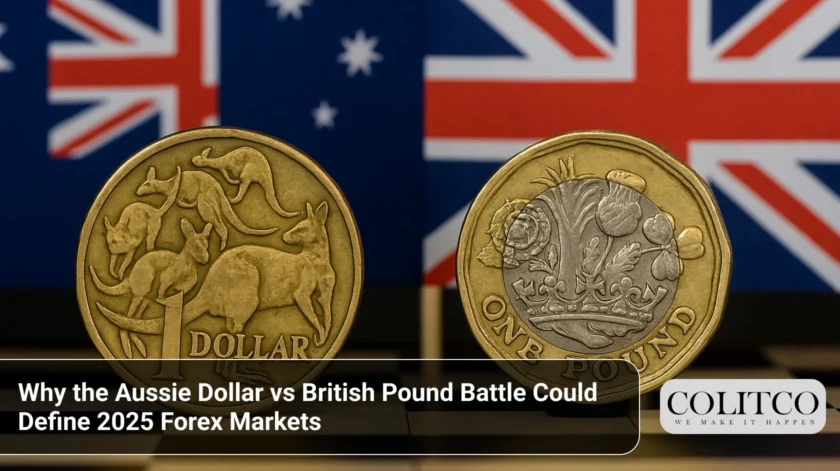The Australian dollar faces one of its toughest tests in years. Against the British pound, the AUD is caught between commodity price volatility, aggressive central bank rate cuts, and mounting global economic uncertainty.
For forex traders watching the AUD vs GBP pair, 2025 isn’t just another year. It’s a stress test for resource currencies in an economy that’s anything but stable.
The Current State of Play
As of early October 2025, the GBP/AUD exchange rate hovers around $2.04, trading within a year-to-date range of $1.96 to $2.15. That’s significant volatility for a major currency pair.
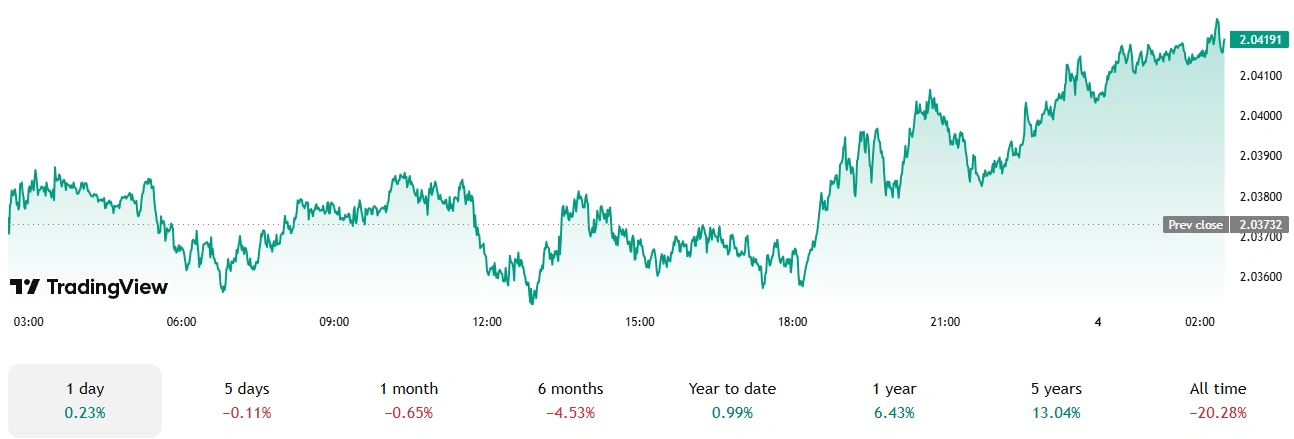
GBP/AUD exchange rate volatility in 2025 reflects competing central bank policies and commodity price pressures
The pound has gained roughly 1% against the Aussie dollar so far this year. But dig deeper into the monthly charts and a different story emerges. April saw the pound spike to $2.15 against the AUD before retreating. January witnessed lows near $1.96.
What’s driving this choppy price action? Three forces are colliding.
Central Banks on Different Trajectories
Both the Reserve Bank of Australia and Bank of England are cutting interest rates. Butthey’re doing it at different speeds and for different reasons.
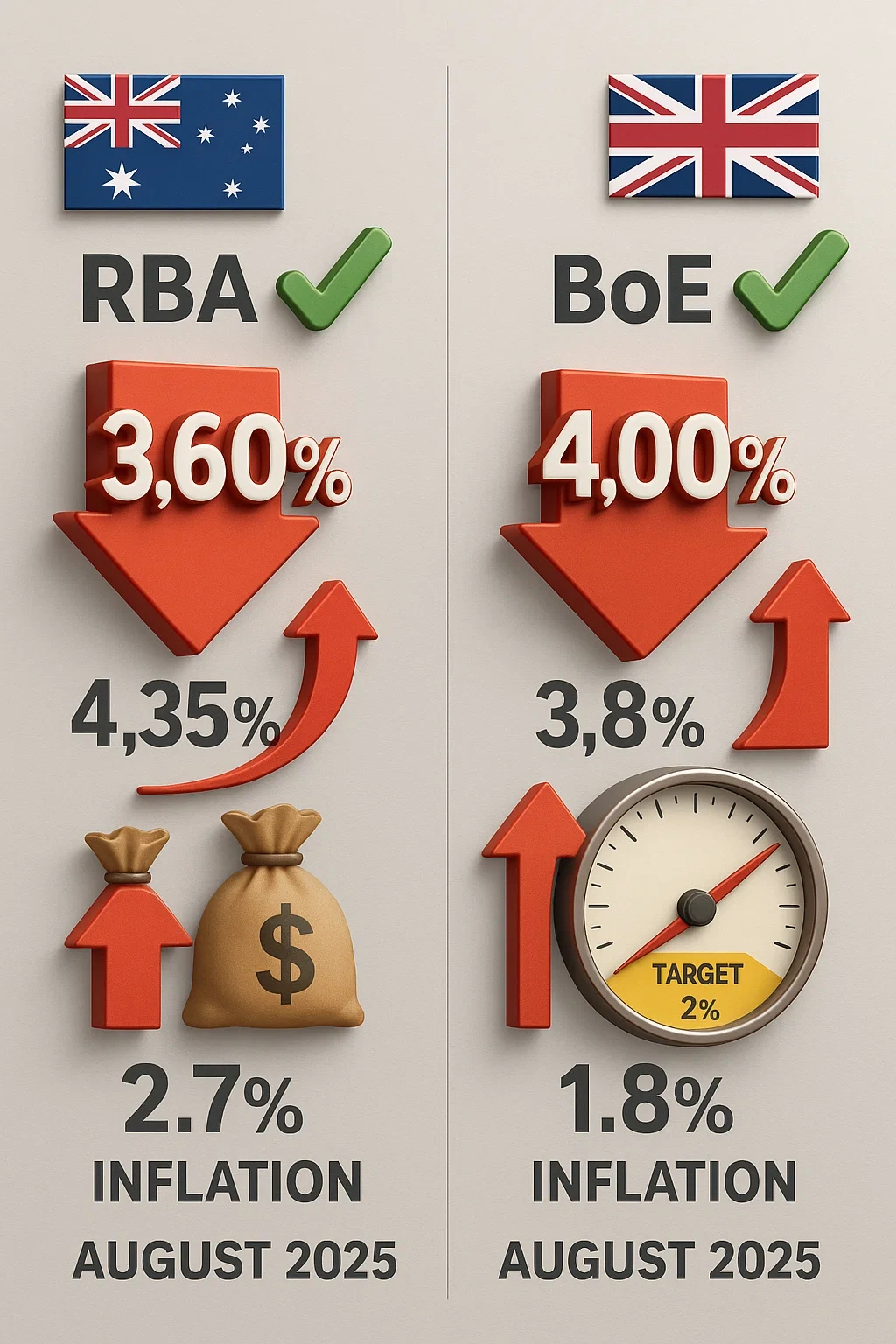
The RBA lowered its cash rate to 3.60% in August 2025 after trimmed mean inflation fell to 2.7% in the June quarter. That’s a dramatic shift from the 4.35% rate that prevailed at the start of the year.
The Bank of England cut rates to 4.00% in August 2025, down from a peak of 5.25% in August 2023. But here’s the twist: UK inflation remained at 3.8% in July and August, well above the BoE’s 2% target.
The interest rate differential matters for forex traders. When one currency offers higher yields than another, it tends to attract capital flows. The narrowing gap between AUD and GBP rates is reshaping the playing field.
Market pricing suggests more cuts ahead from both central banks. Forecasters expect the Bank of England base rate to fall to 3.75% by year-end and possibly reach 3.00% by mid-2026.
The RBA’s path looks similar but perhaps more aggressive given inflation’s faster decline in Australia.
Commodity Prices: The Aussie’s Achilles Heel
The Australian dollar is often called a ‘commodity currency’ because commodities account for a large share of Australia’s exports, and movements in commodity prices result in movements in export prices.
That relationship is proving painful in 2025.
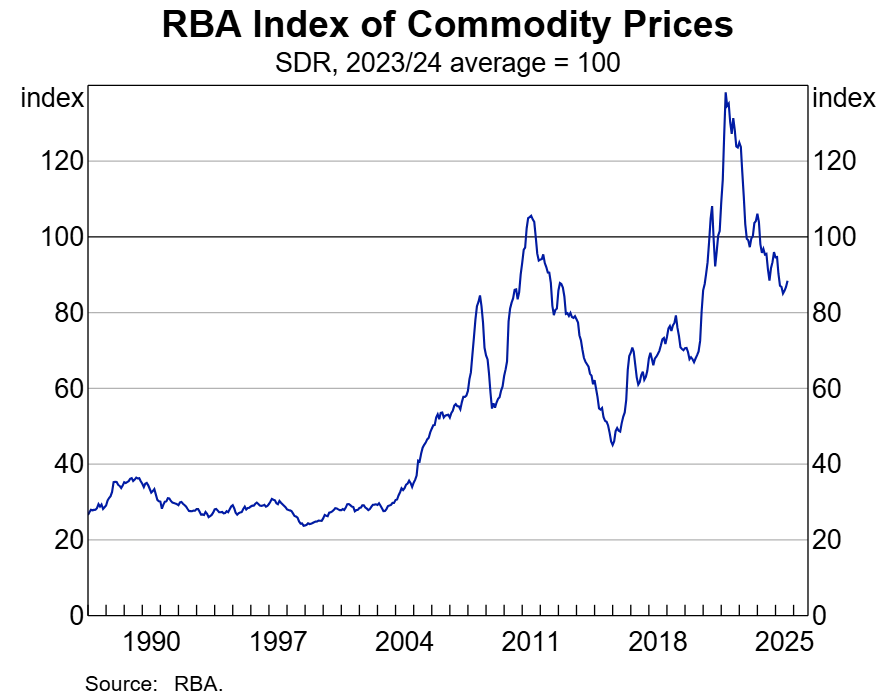
Falling commodity prices are weighing on Australia’s resource-dependent economy and the Australian dollar
Australian resource and energy exports are forecast to decline 10% to $372 billion in FY2025 as commodity export volumes improve but prices settle at lower levels due to soft global economic growth.
Iron ore, Australia’s largest export earner, faces headwinds from China’s struggling property sector. Coal prices have tumbled amid rising renewable energy generation and trade policy uncertainty.
There’s a silver lining, literally. Gold prices rose 35% to the December quarter year-on-year, boosted by global economic uncertainty and monetary easing by major central banks.
Australia’s gold export earnings are being revised upward. But one bright spot can’t offset broader commodity weakness.
Global Economic Uncertainty Clouds the Picture
Trade tensions are reshaping currency markets in unexpected ways.
Recent US tariff announcements and retaliatory measures from China and other nations are creating widespread economic uncertainty, with the RBA noting these developments could weigh on Australian exports and potentially trigger supply chain disruptions.
For a trade-dependent economy like Australia, that’s concerning. China is Australia’s largest trading partner, accounting for roughly one-third of exports. Any slowdown in Chinese demand hits the AUD directly.
The UK faces its own challenges. UK-weighted global GDP growth fell from 2.2% in Q4 2024 to 2.1% in Q1 2025, primarily due to a 0.1% contraction in US GDP.
Brexit’s long-term economic drag continues weighing on British growth prospects. But the UK’s diversified economy and strong services sector provide some cushion.
What the Forecasts Show
Forex forecasts for AUD/GBP in 2025 tell a story of expected weakness for the Aussie dollar.
The pound-to-Australian dollar exchange rate is forecast to reach $2.03 by December 2025, $2.00 by March 2026, and $2.00 by June 2026, according to consensus predictions.
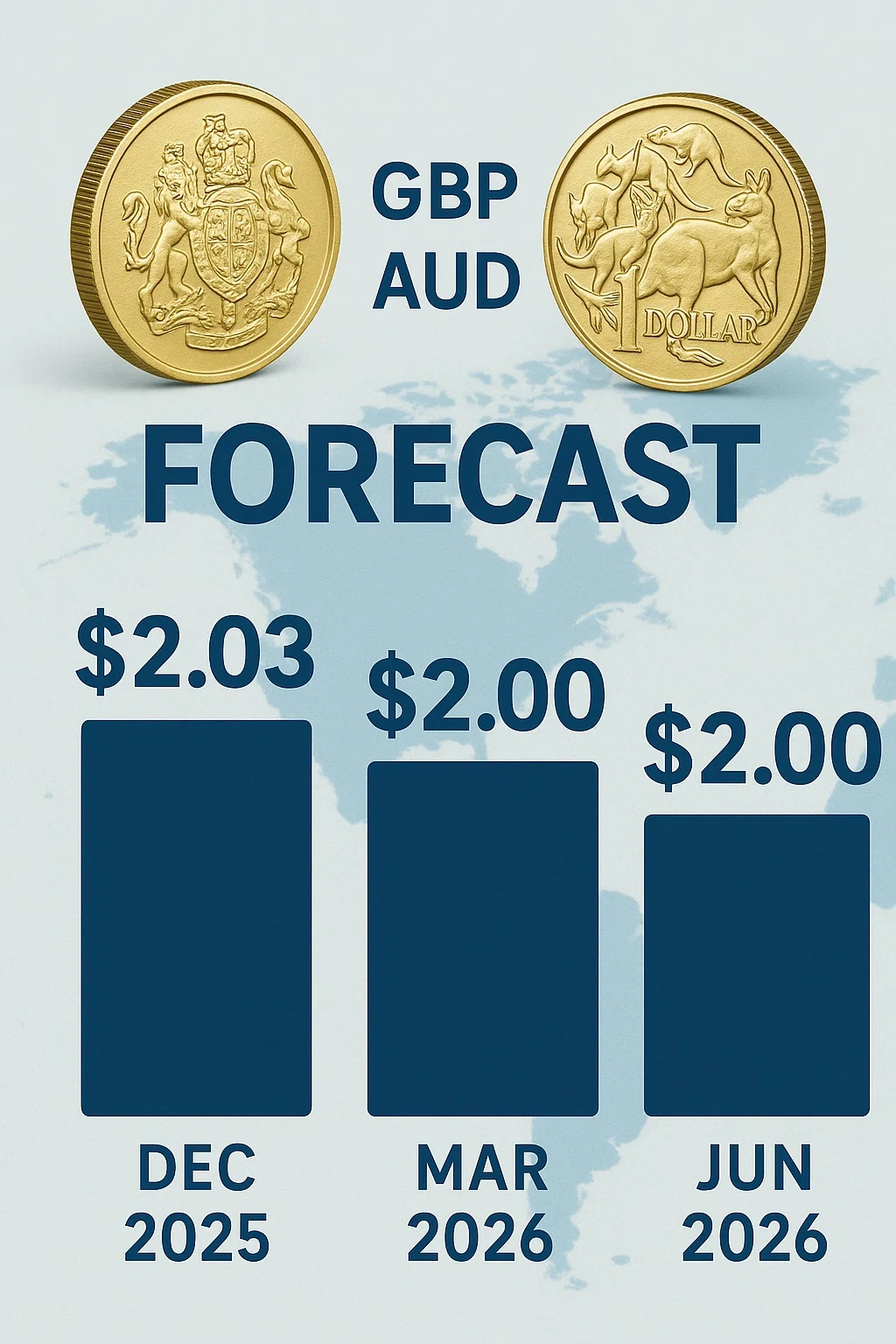
Other forecasters paint a similar picture. GBP to AUD forecasts show the exchange rate declining from around $2.06 in September 2025 to $2.00 by December, then falling further to $1.97 by January 2026.
That implies the Aussie dollar could weaken another 2-3% against the pound by year-end.
Why the bearish outlook? Australia’s economy is growing below trend while inflation falls faster than expected. The RBA expects GDP growth to pick up gradually but forecasts have been revised lower due to weaker-than-expected domestic demand and global trade uncertainties.
Trading Strategies in Choppy Waters
For forex traders, the AUD/GBP pair offers both risk and opportunity.
Resource currencies like the AUD tend to perform well when global growth is strong and commodity demand is rising. Neither condition applies in 2025’s economic environment.
The Aussie’s performance will be shaped by its dependence on commodity exports, with iron ore tying AUD closely to China’s economic performance. Any significant stimulus from Beijing could provide a lifeline.
Technical indicators show mixed signals. As of early October 2025, GBP/AUD is hovering near its 8-day and 21-day EMAs but trading below its 50-day EMA by 0.62%.
Short-term traders might find opportunities in the pair’s volatility. Longer-term investors face a trickier decision given the structural headwinds facing Australia’s resource-dependent economy.
The Bottom Line
The AUD vs GBP battle in 2025 reflects broader tensions in global forex markets. Resource currencies are struggling as commodity prices soften and China’s economy slows.
Both Australia and the UK are cutting interest rates, but the Aussie dollar faces additional pressure from its commodity exposure. The pound, despite its own economic challenges, benefits from a more diversified economy.
Forecasts point to further AUD weakness through year-end and into 2026. But forex markets are notoriously difficult to predict, especially in an environment this uncertain.
What’s certain is that traders watching this pair need to monitor commodity prices, Chinese economic data, and central bank policy shifts. Any one of these factors could tip the balance.
Also Read: Daylight Saving Australia Returns: What Millions Need to Know Before Clocks Spring Forward
FAQs
Q: What is the current AUD to GBP exchange rate?
A: The AUD/GBP rate trades around $0.49 pounds per Australian dollar, or approximately $2.04 Australian dollars per British pound as of early October 2025.
Q: Why is the Australian dollar considered a resource currency?
A: Australia’s economy heavily depends on commodity exports like iron ore, coal, and gold. Changes in global commodity prices directly impact the AUD’s value, making it sensitive to Chinese economic conditions and global growth trends.
Q: Will the Australian dollar strengthen against the pound in 2025?
A: Most forecasts suggest the AUD will weaken against GBP through year-end 2025, with predictions pointing to the pair reaching $2.00 by December and potentially lower in early 2026.
Q: How do interest rate cuts affect AUD/GBP?
A: Both the RBA and Bank of England are cutting rates, narrowing the yield differential between currencies. This reduces one traditional source of AUD support, though relative inflation levels and economic growth matter more for long-term trends.
Q: What factors should forex traders watch for AUD/GBP movements?
A: Key factors include commodity prices (especially iron ore and gold), Chinese economic data and stimulus measures, RBA and BoE policy decisions, global trade tensions, and broader risk sentiment in financial markets.

